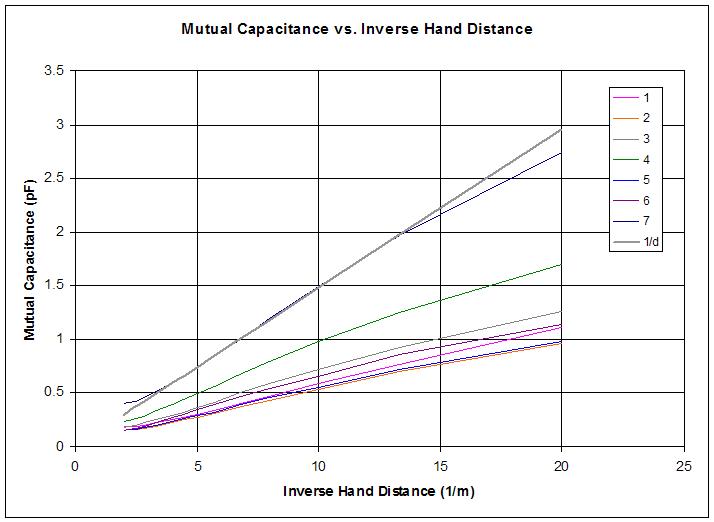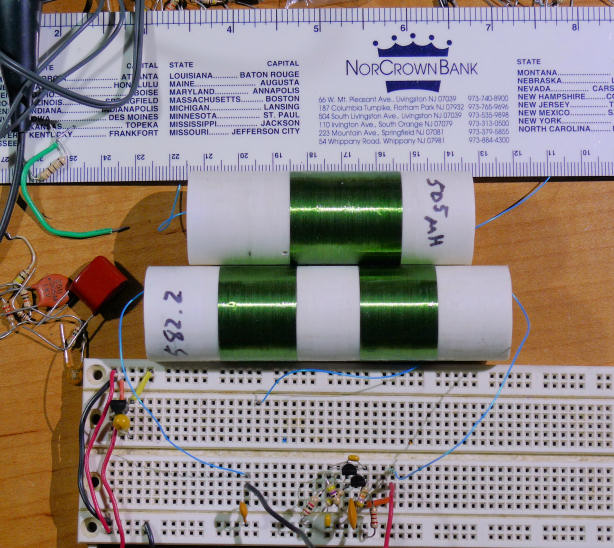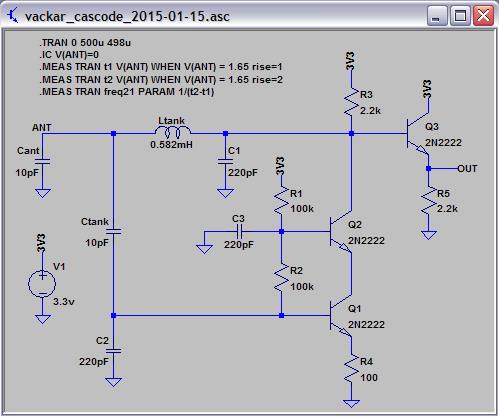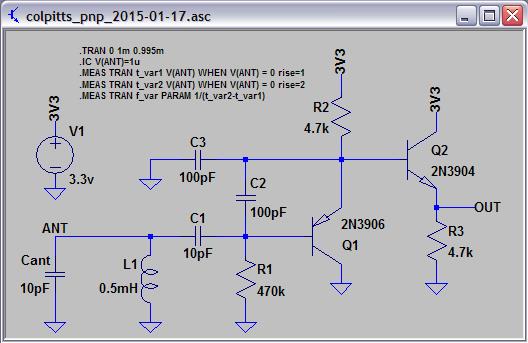REAL Antenna Data (and the implications thereof)
I've spent more time revisiting the pitch antenna geometry issue. I tried a finite element analysis package (Quickfield) to help clarify things, but the student version didn't have enough resolution to even do even the simplest problems with any accuracy, and the geometry editor was too cryptic and weak. Ran across LCnetgen yesterday which converts shapes into Spice models but didn't try it out (supposedly won't compile on Win machines). My efforts to break the problem down into direct, fringe, and other fields haven't been very fruitful.
I've come to the conclusion that the search for a mathematical formula that approximates the mutual capacitance between hand and antenna is extremely difficult, fraught with controversy, and rather a waste of time. So I decided to gather data for a variety of antenna geometries, stick this in a spreadsheet, work backwards to mutual capacitance, and then use this directly with analog and digital Theremin circuits:
http://www.mediafire.com/download/8qzfo3529j831if/Analog_Digital_2014-12-13.xls
The data isn't very high resolution (too few distance points) and the curves are somewhat lumpy even though I blend three trial runs for each antenna (this tends to reduce random error but doesn't help systematic error). I'm still mulling it over, but:
1. For simple LC heterodyning analog Theremins it seems that longer antennas give better linearity, and thinner antennas give lower relative sensitivity - both of which are likely advantageous.
2. For simple LC heterodyning digital Theremins with offset period measurement, it seems a plate gives the most linear response with the highest heterodyning frequency, and also gives the most absolute sensitivity - both of which are definitely advantageous (and livio strikes again!).
3. For all antenna geometries, the mutual capacitance is very strongly correlated to 1/distance, and I believe this is why period measurement (1/frequency) yields such excellent linearity:

The above is a plot of mutual capacitance vs. inverse hand distance for all 7 antennae I gathered data for. Other than absolute sensitivity differences due roughly to antenna surface area, some pooping out near the antenna (on the right here) is a bit more pronounced for longer antennae (which one might predict due to simple geometry), and rather abrupt pooping out as the hand reaches the body (on the left here), the mutual capacitance response of all antennae are remarkably similar and almost entirely characterizable via 1/d (e.g. the 7th antenna - a plate - is aligned above with 0.148/d).


 - dewster
- dewster

